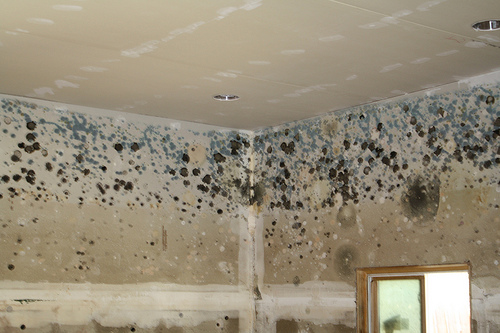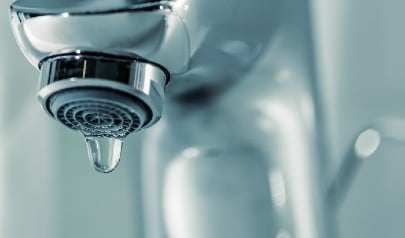Just how to Diagnose a Leaking Bathroom
Just how to Diagnose a Leaking Bathroom
Blog Article
Just how do you feel on the subject of How to Repair and Prevent Bathroom Water Damage??

Water damage frequently occurs in the shower room as a result of the water made use of day-to-day. Sometimes, the damage could be a little mold from the shower. Other times, it's large damages on your flooring. Whatever it is, it is constantly excellent to know the cause and prevent it before it occurs.
This guide will undergo a few of the typical sources of water damage in the washroom. We will certainly additionally analyze what you can do to stop these reasons from harming your washroom. Allow's dive in.
These are the usual factors you would certainly have water damage in your washrooms and also just how you can detect them:
Excess Dampness
It's trendy to have that lengthy shower and sprinkle water while you dance around and act like you're performing, but sometimes these acts could cause water damage to your washroom.
Spraying water around can create water to head to edges as well as develop molds. Watch how you spread out excess dampness around, as well as when you do it, clean it up to avoid damage.
Splits in your wall surface ceramic tiles
Restroom wall tiles have actually been particularly created for that function. They safeguard the wall from dampness from individuals taking showers. Nevertheless, they are not indestructible.
Sometimes, your washroom wall surface ceramic tiles crack and permit some wetness to permeate right into the wall. This could possibly ruin the wall if you do not take any kind of action. If you notice a split on your wall surface tiles, repair it promptly. Don't wait until it damages your wall.
Overflowing commodes as well as sinks
As humans, occasionally we make errors that could create some water damage in the shower room. For example, leaving your sink faucet on might cause overruning and damages to other parts of the bathroom with dampness.
Additionally, a malfunctioning toilet can trigger overflowing. For instance, a broken commode deal with or various other parts of the cistern. When this takes place, it might damage the flooring.
As soon as you observe an overflowing sink or commode, call a plumbing to aid handle it immediately.
Ruptured or Leaking Pipes
There are lots of pipelines bring water to various parts of your restroom. Some pipelines take water to the bathroom, the sink, the faucets, the shower, and several other locations. They crisscross the small location of the washroom.
Every so often, these pipelines might obtain rusty as well as ruptured. Other times, human activity could trigger them to leakage. When this happens, you'll discover water in the edges of your restroom or on the wall surface.
To spot this, watch out for gurgling walls, molds, or mold. Call a professional emergency plumbing professional to fix this when it occurs.
Roof covering Leaks
In some cases, the trouble of water damage to the bathroom may not come from the shower room. As an example, a roof leak might create damage to the restroom ceiling. You can identify the damages done by looking at the water spots on the ceiling.
If you discover water discolorations on your ceiling, check the roof covering to see if it's damaged. Then, call an expert to aid address the issue.
Conclusion
Water damage to your shower room can be aggravating. However, you can handle it if you avoid several of the reasons discussed in this overview. Call an expert emergency situation plumbing if you observe any kind of extreme damage.
How to Prevent Water Damage in Your Bathroom?
Water damage repair is an expensive, meticulous, and lengthy process. Unfortunately, bathrooms are the most susceptible rooms to water damage due to toilets, showers, and sinks. Pipes and fixtures wear out over time and are not immune to damage. But all is not lost, as there are ways to prevent water damage from occurring in your bathroom.
Check Your Plumbing
Nothing lasts forever, especially pipes, which can rust and begin leaking over time. You should periodically conduct pipe inspections and pay attention for any musty smells or water stains that may indicate you need water damage repair. Here are some things to check:
Frequently test valves for your toilet, shower, and sink to ensure they are properly working. Check faucet supply lines hidden under vanities and replace when needed. Replace cracked or deteriorating caulking along sinks, tubs, and showers. If you notice a clog in your sink, call in a professional. Since you can’t check the pipes in the wall, keep an eye out for stains, drywall bubbling, musty smells, and excess moisture; if the bathroom is on a second level, check the ceiling of the room directly below for these signs. Don’t Overwork Your Toilet
One of the most common reasons bathrooms need water damage repair is due to overflowing toilets. Save yourself the hassle of cleanup by being mindful and not pushing your toilet to extreme limits. If you have young children, it is especially important to keep an eye on them when they are in the bathroom and to teach them how to avoid clogging the toilet. Here are some more tips to help prevent your toilet from overflowing:
If you have a septic tank, only use septic-safe toilet paper Do not flush anything down the toilet besides toilet paper; items like diapers and sanitary napkins will clog the piping Pay attention to your toilet’s water level: If it’s low, it could mean it is partially clogged or that there is a crack in the toilet bowl https://www.alure.com/home-improvements-blog/resources/how-to-prevent-water-damage-in-your-bathroom

As a reader on How to Repair and Prevent Bathroom Water Damage?, I assumed sharing that topic was important. Be sure to take the time to distribute this blog if you liked it. We take joy in reading our article about How to Repair and Prevent Bathroom Water Damage?.
Schedule A Service Call Report this page